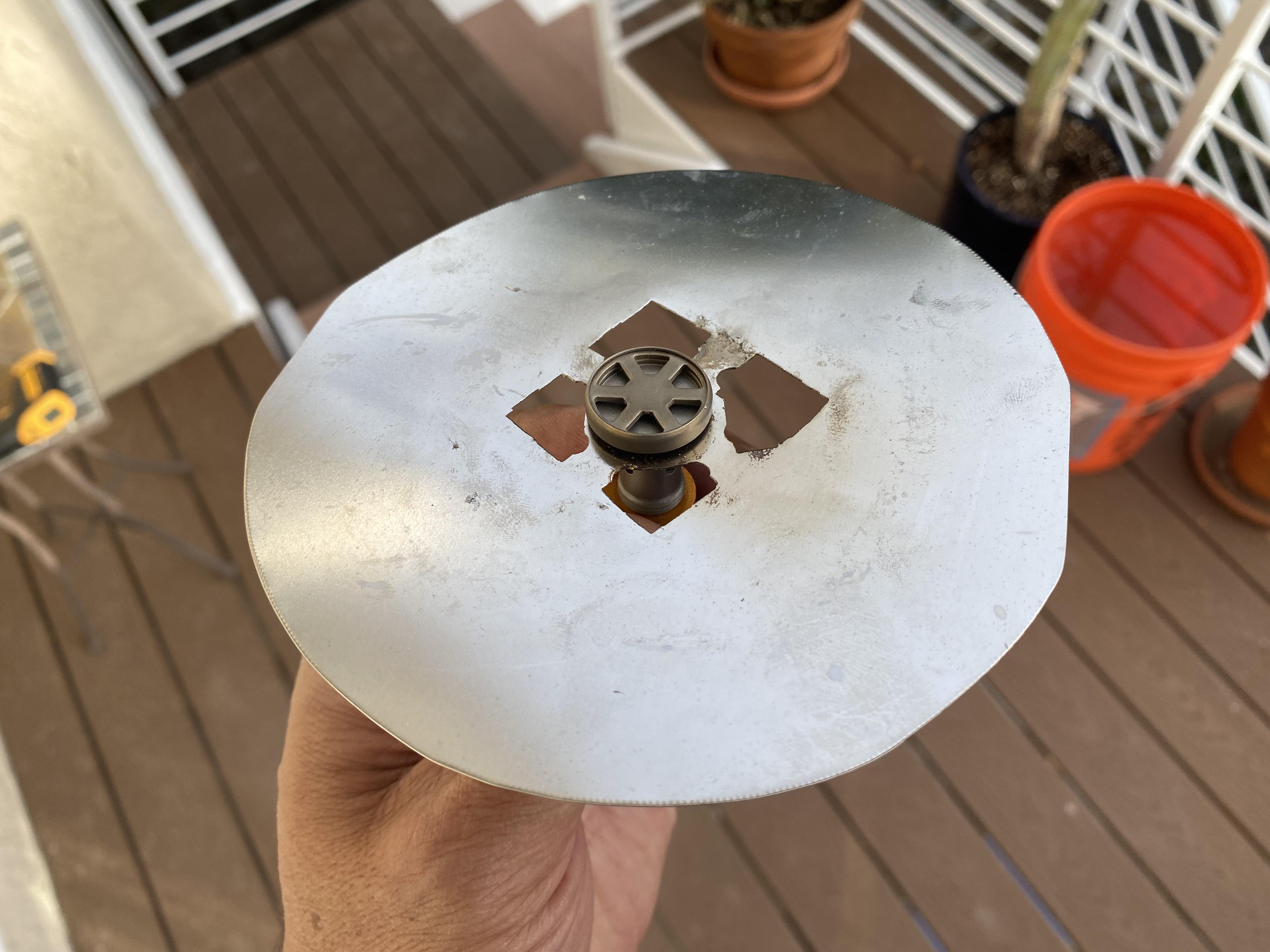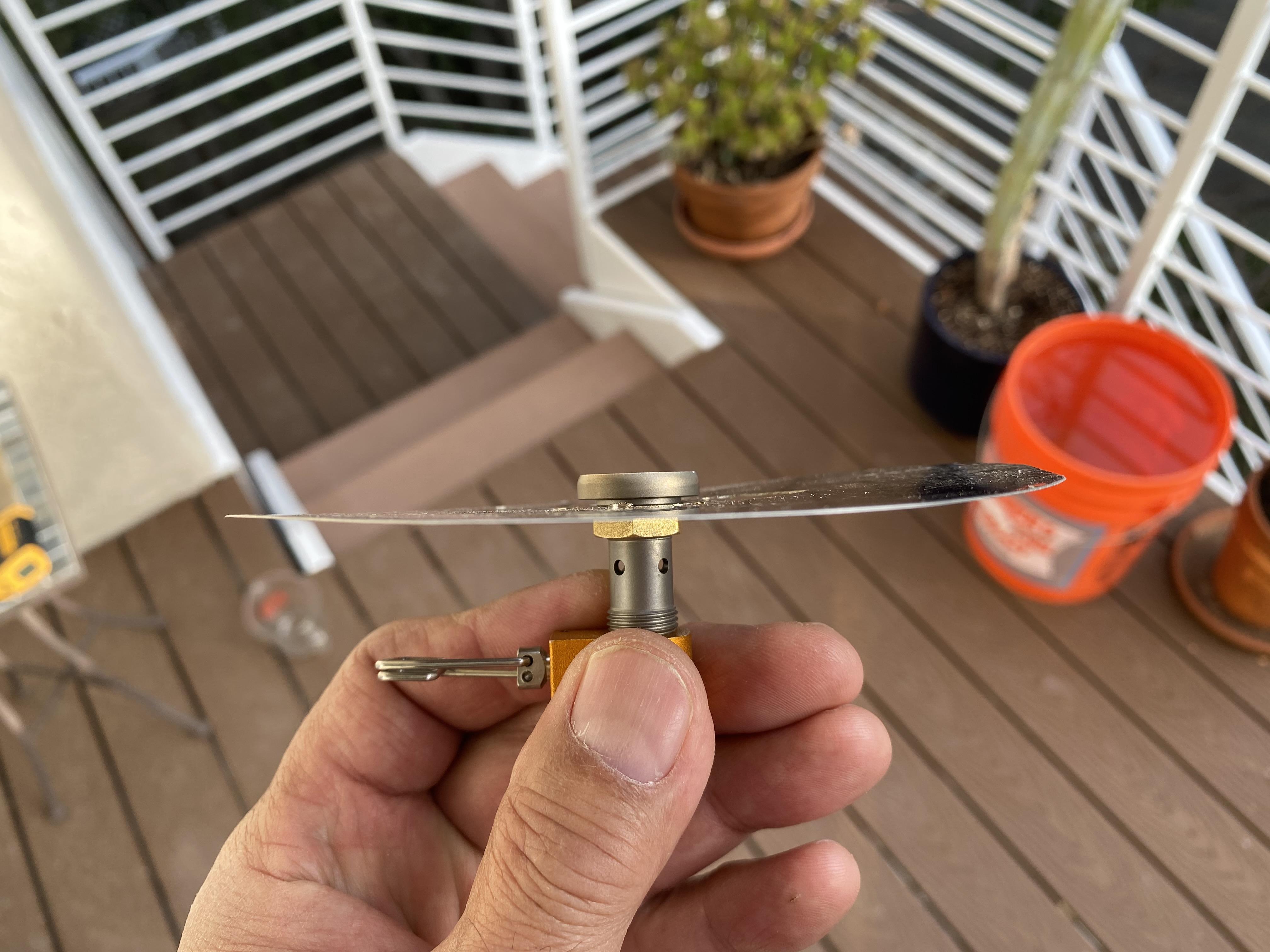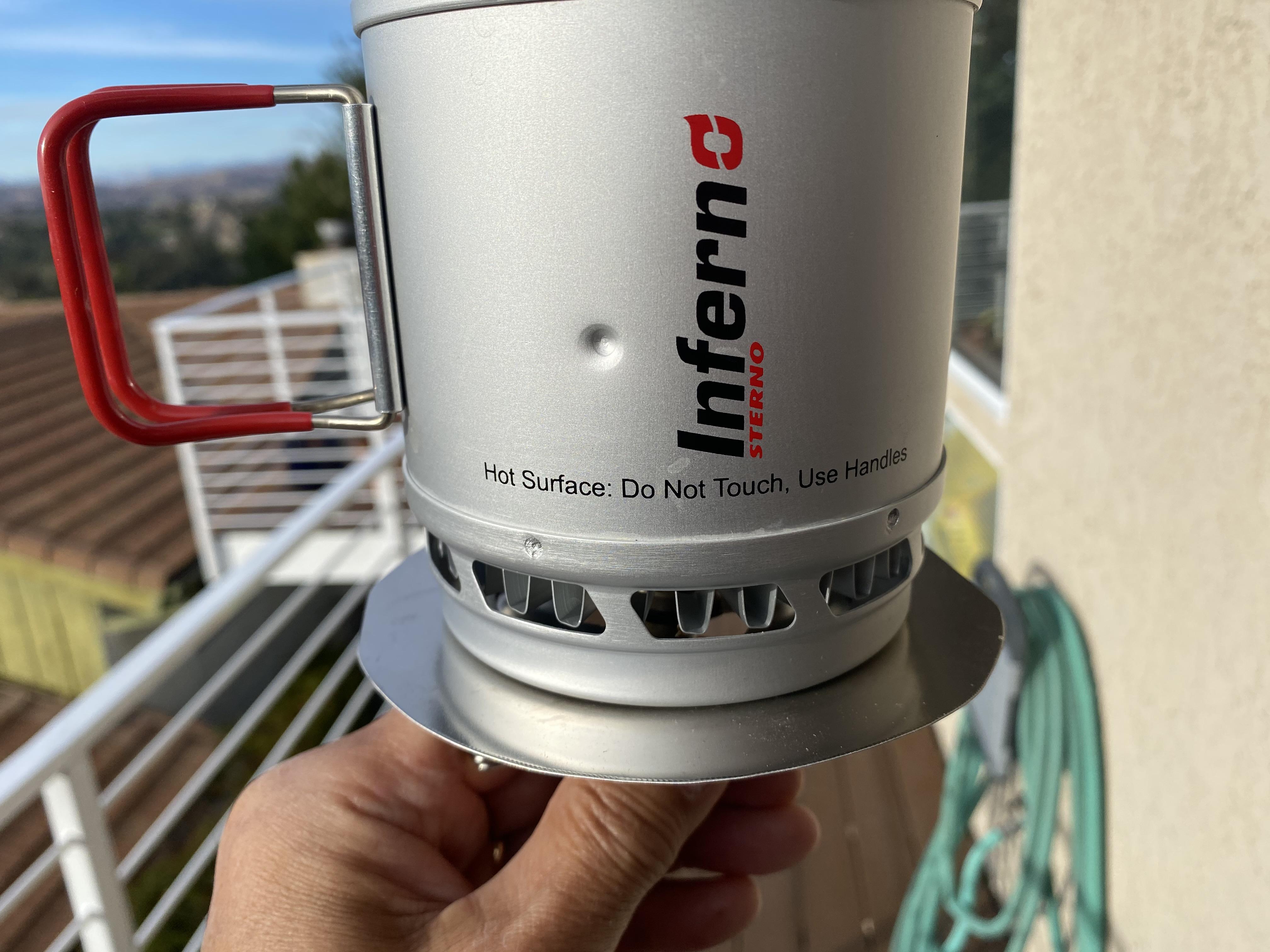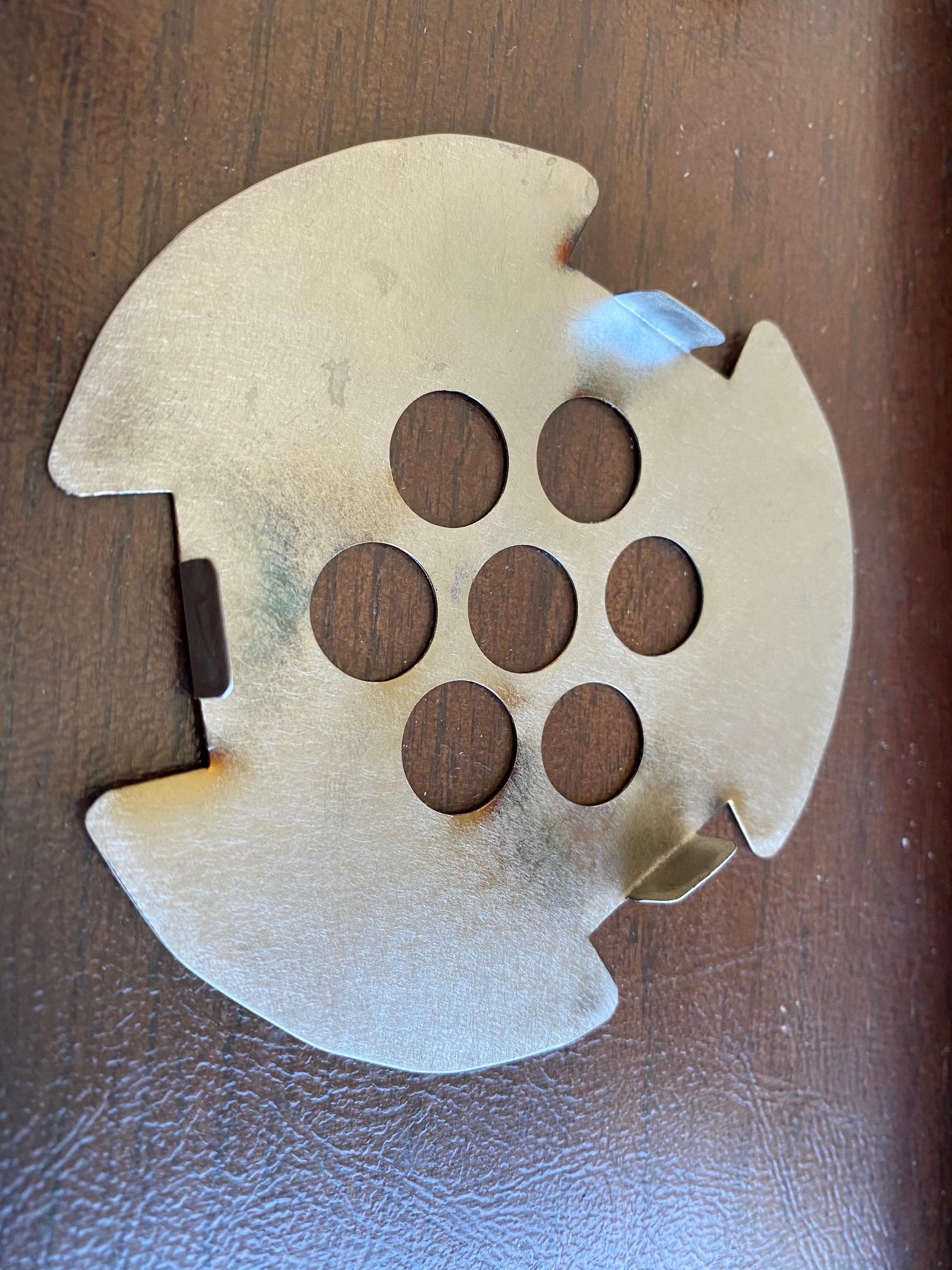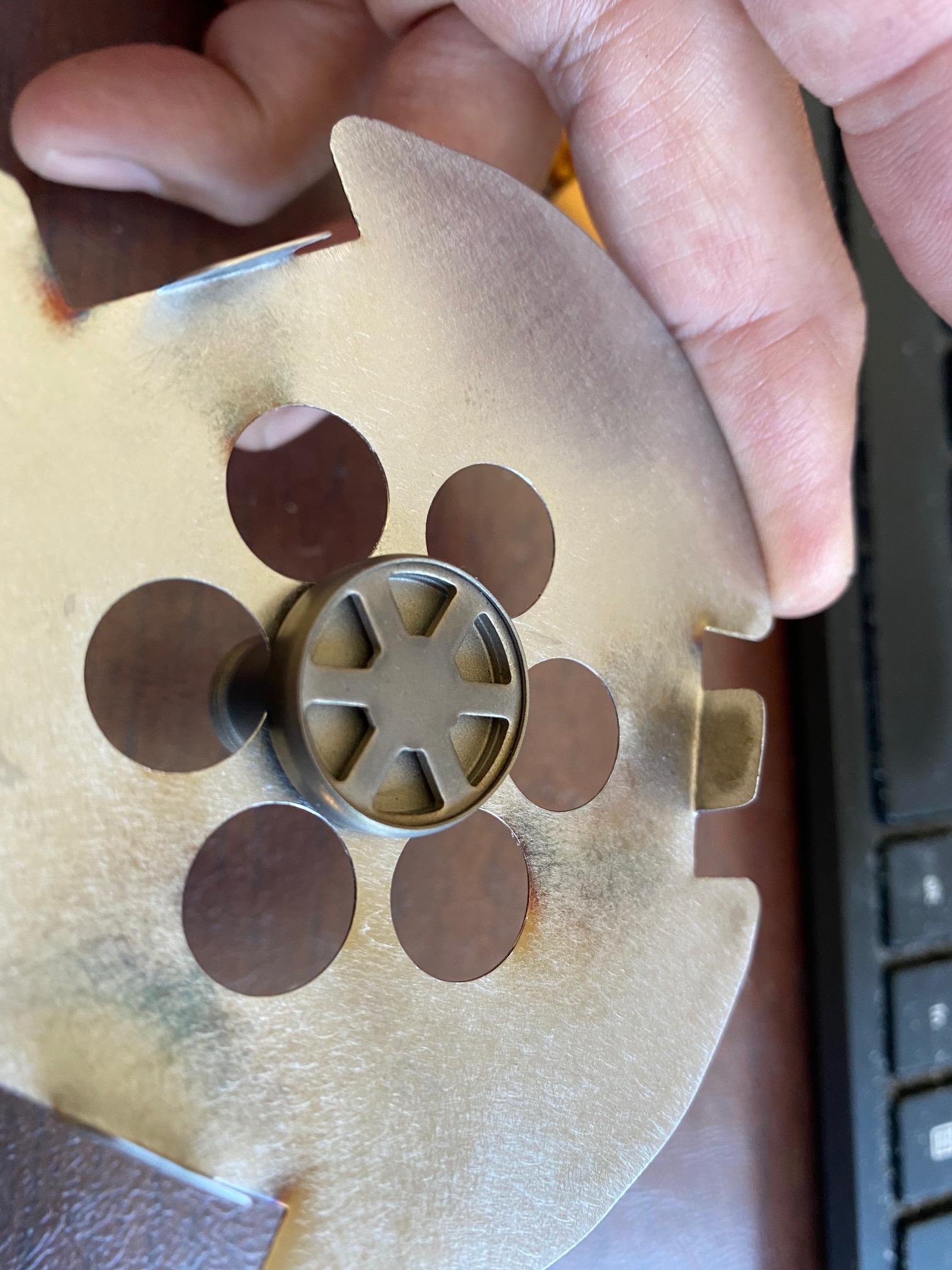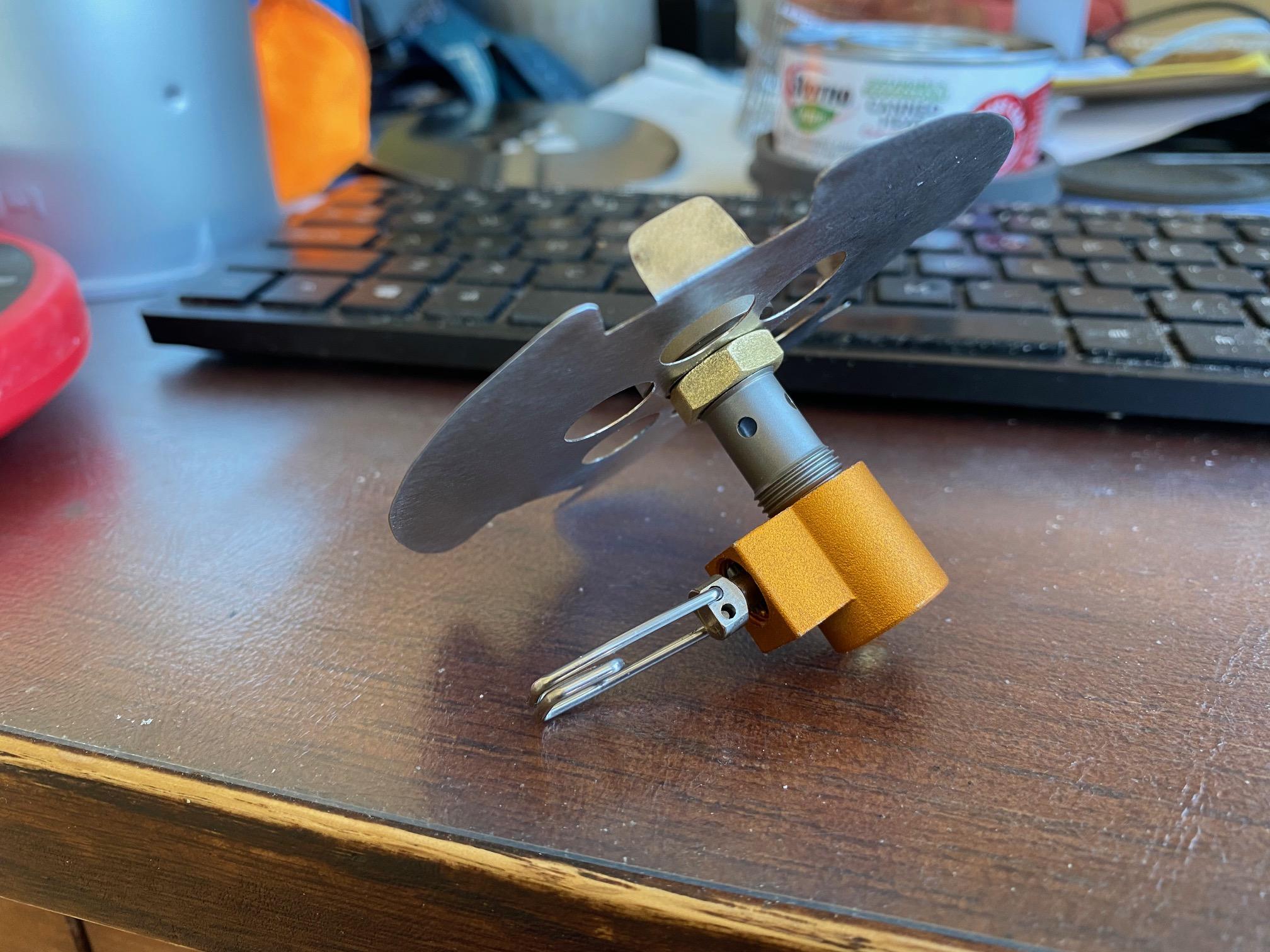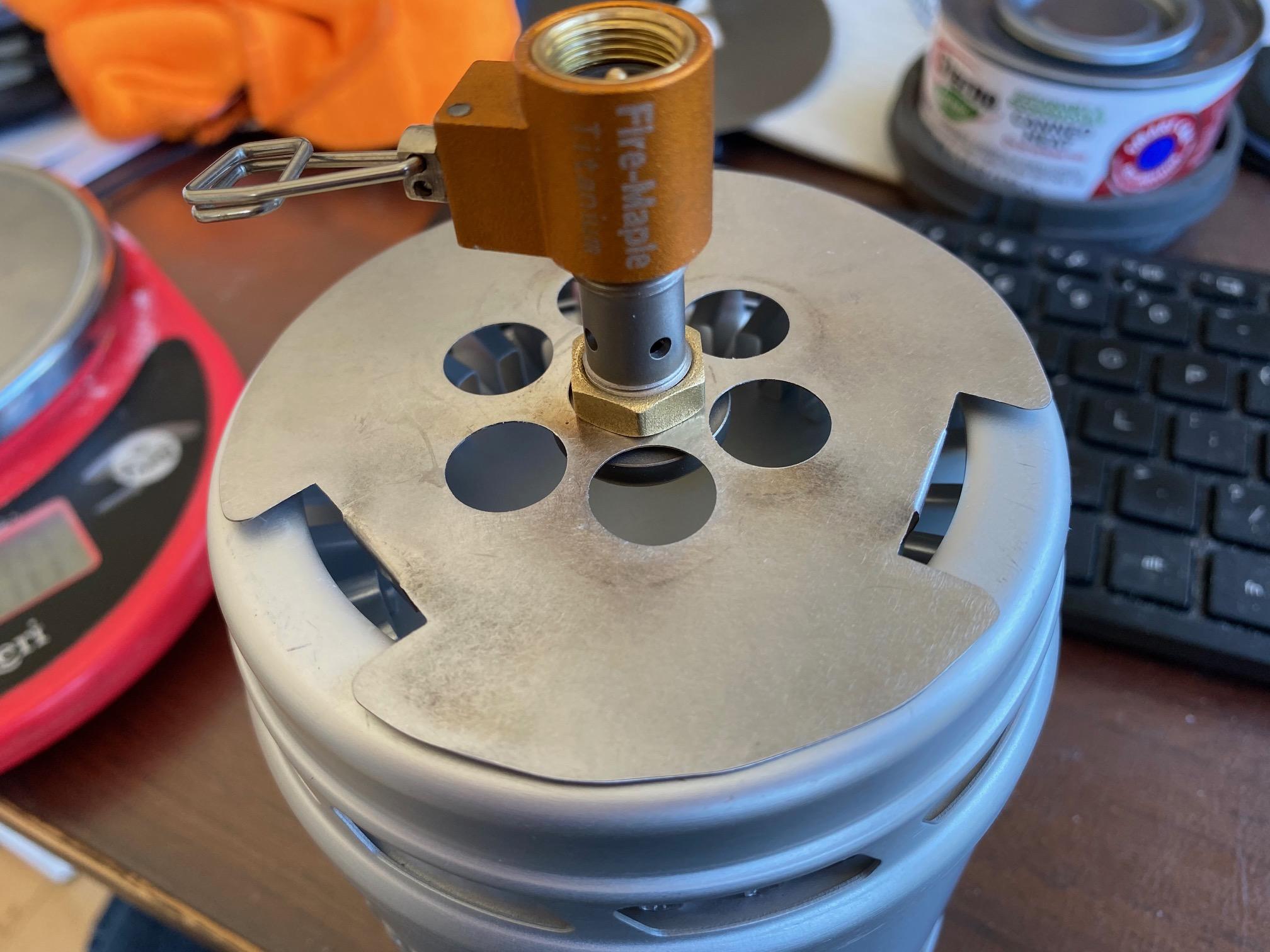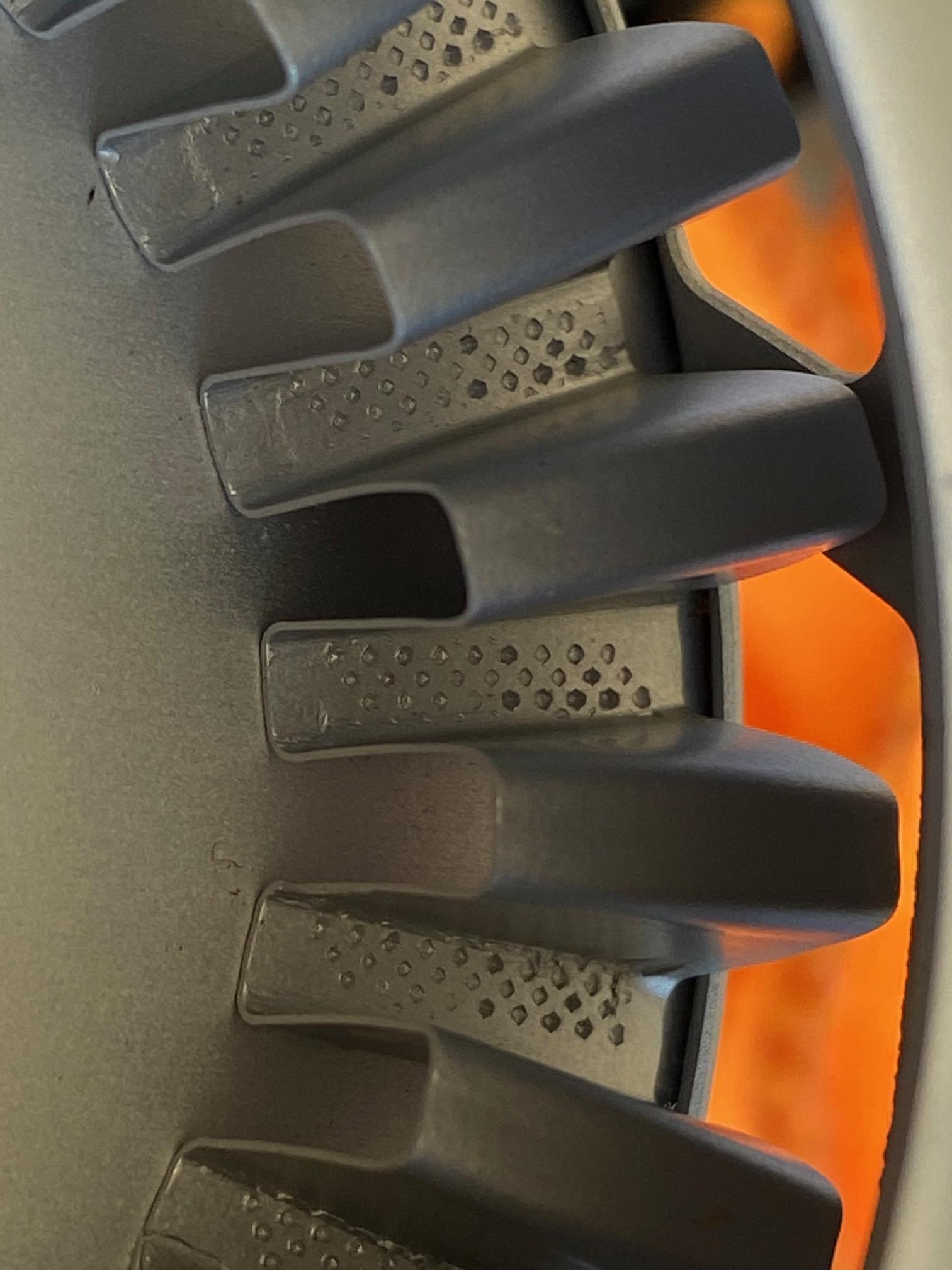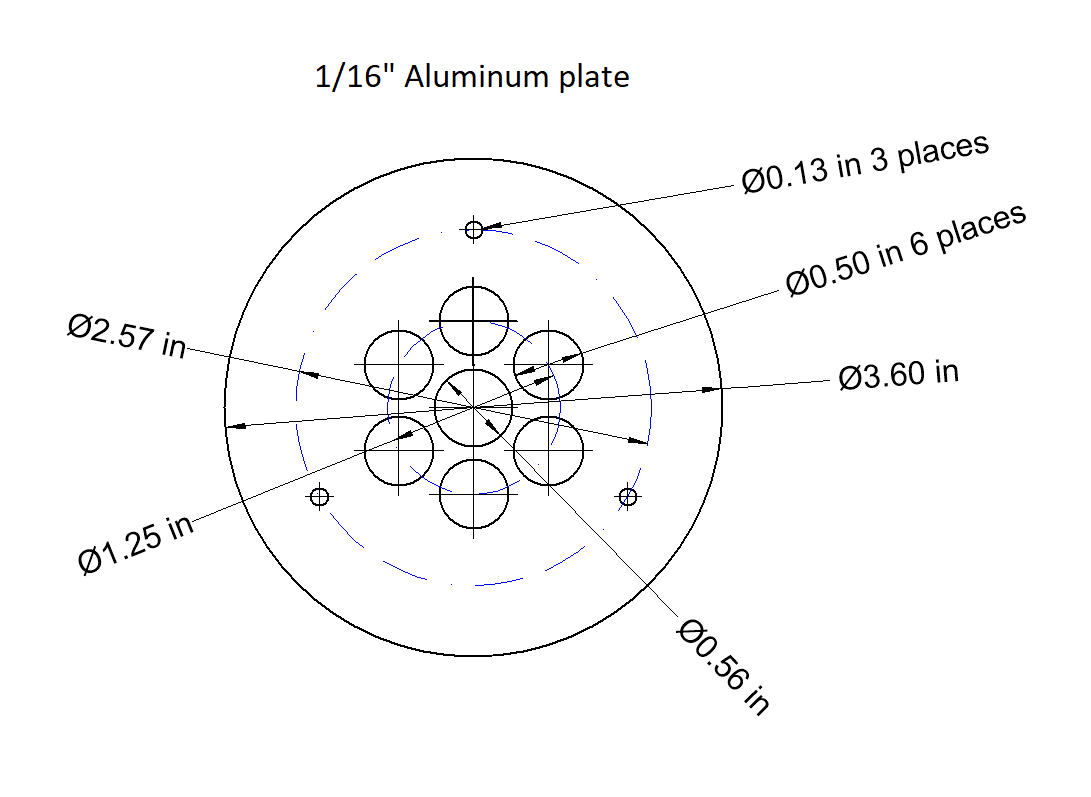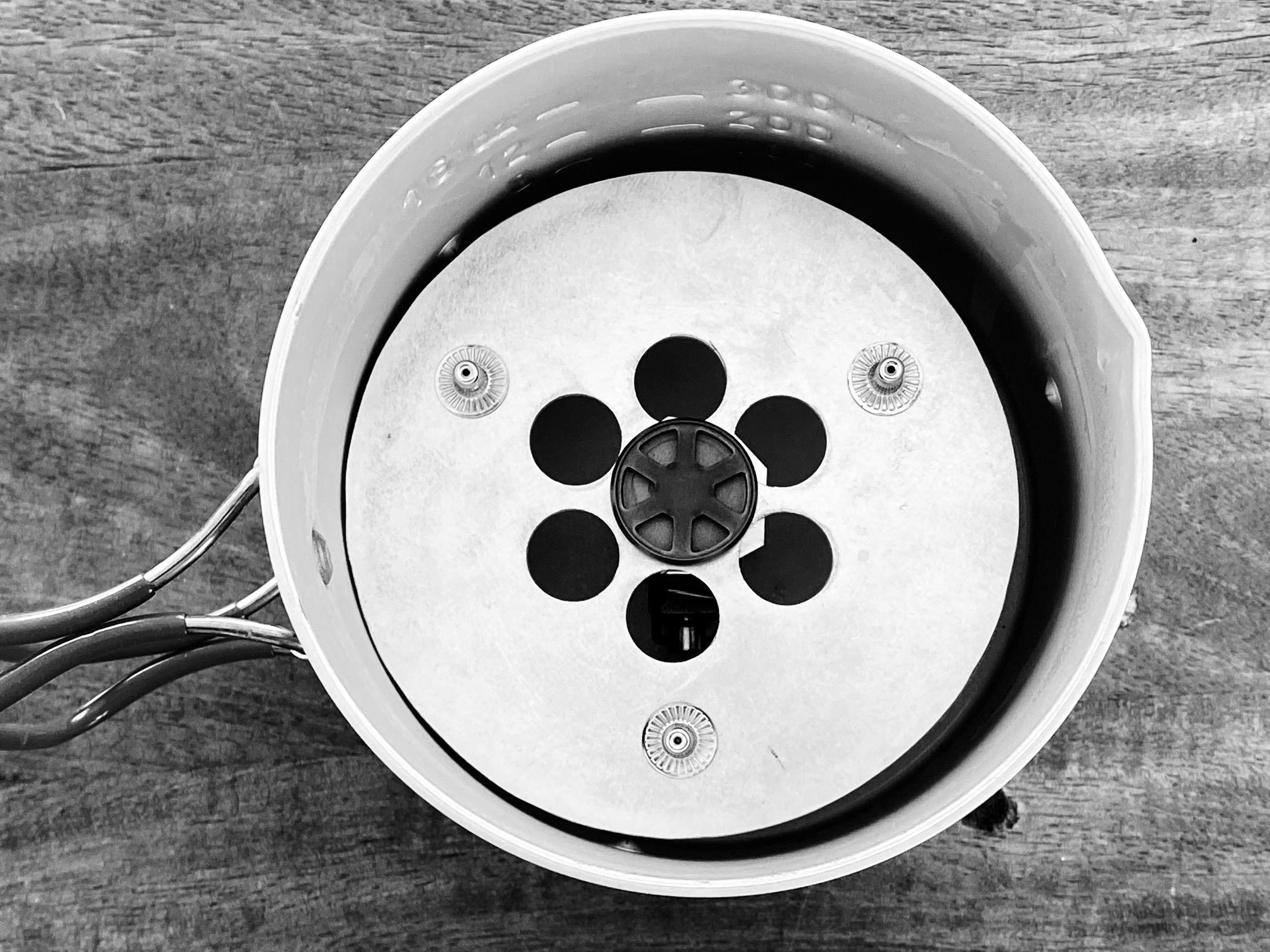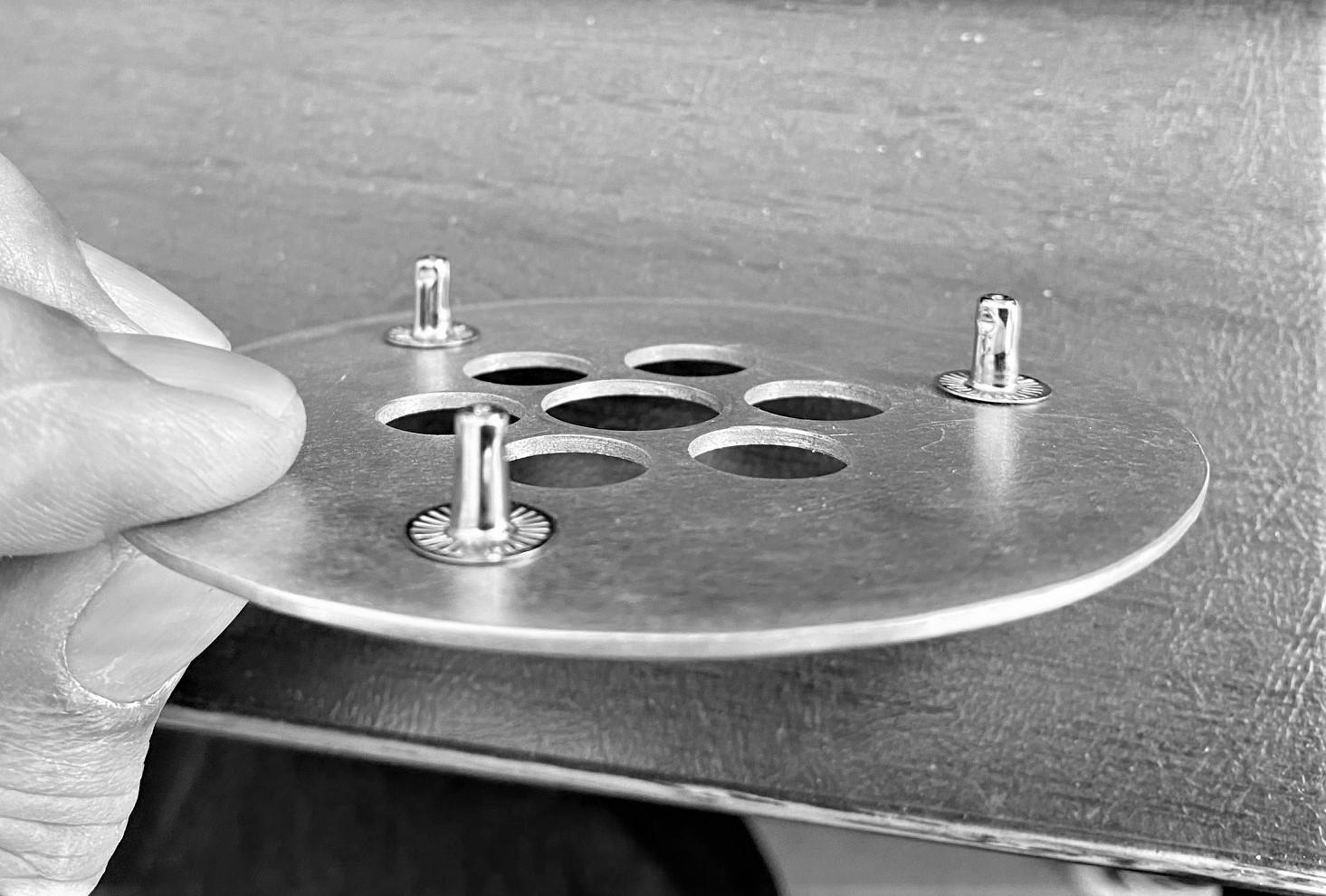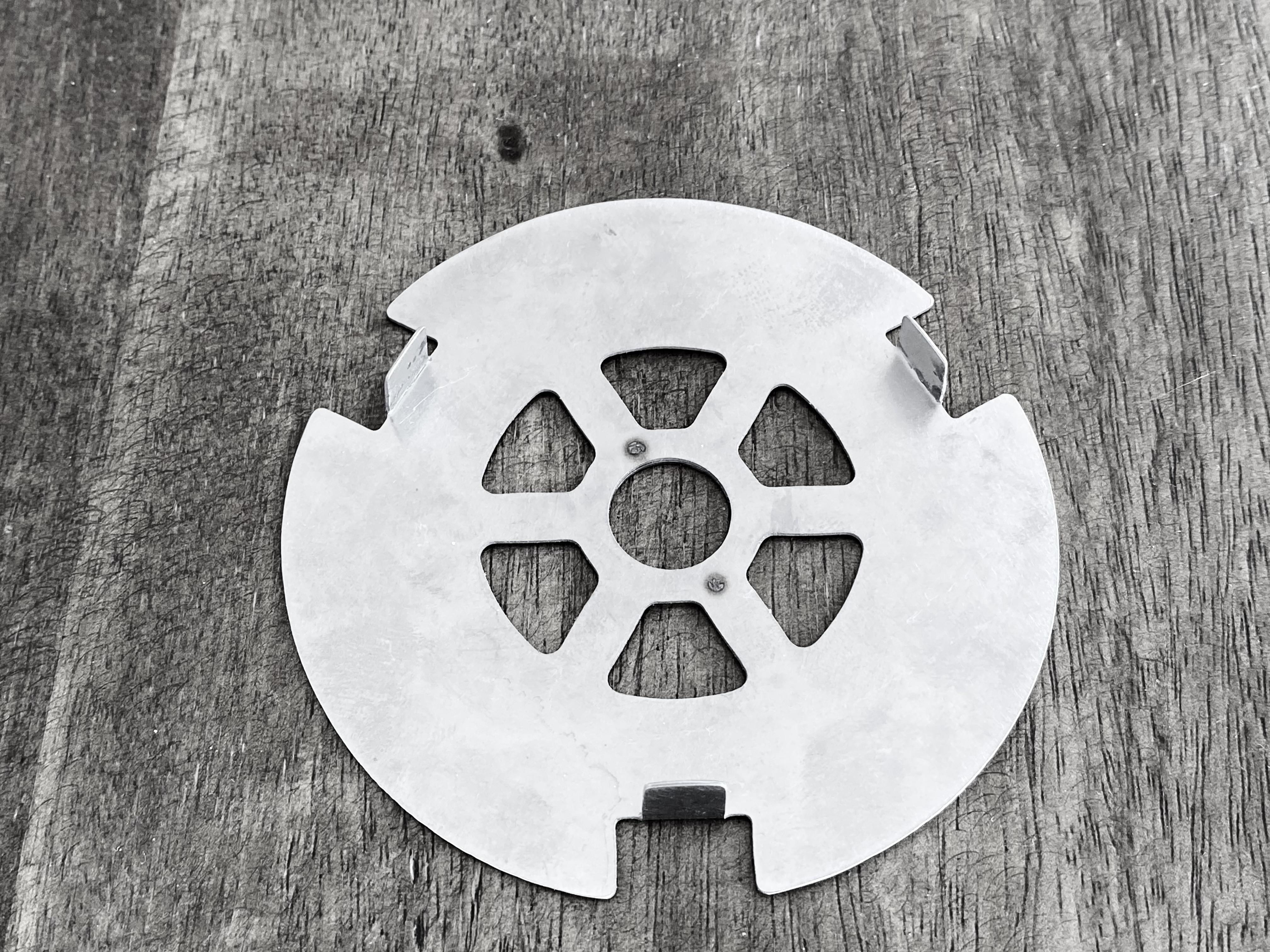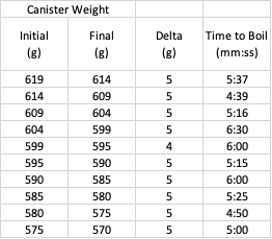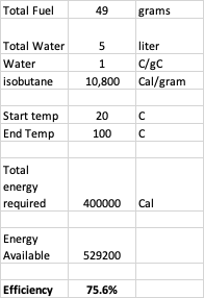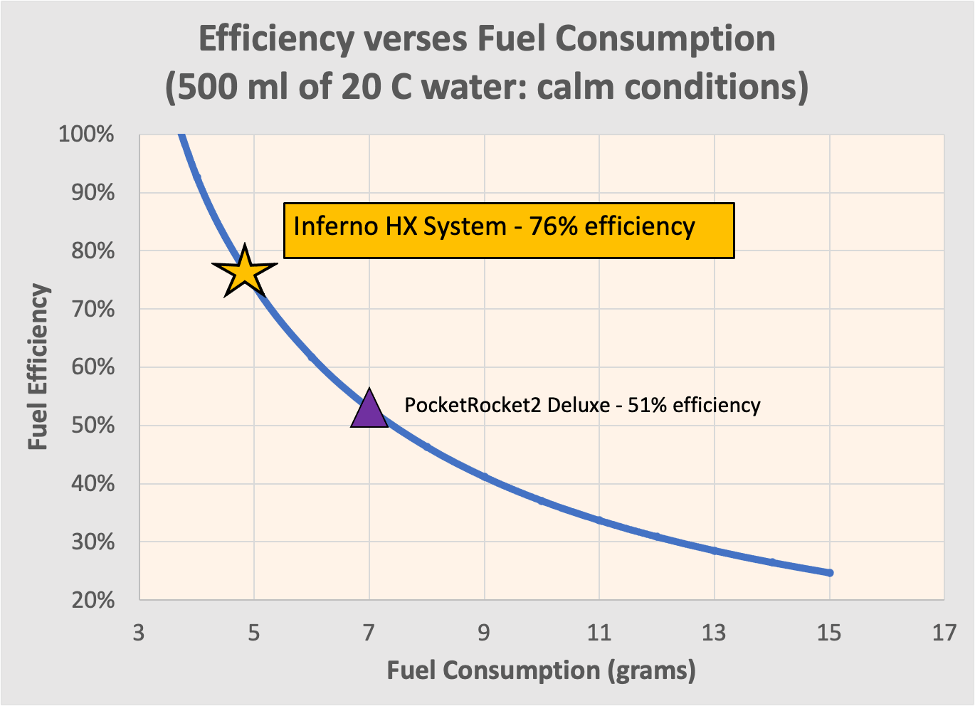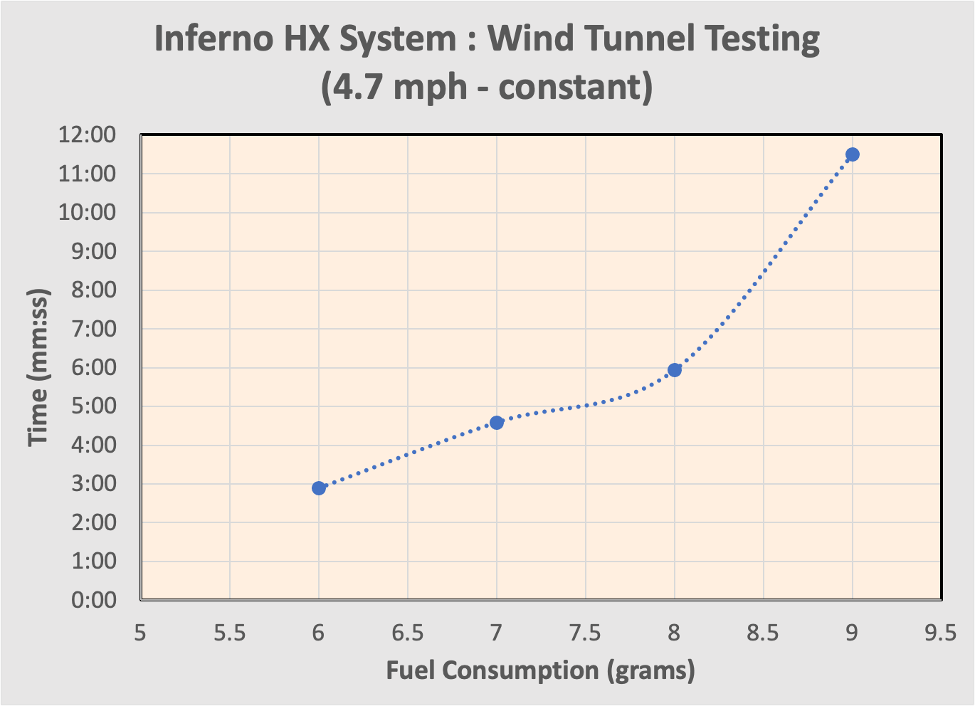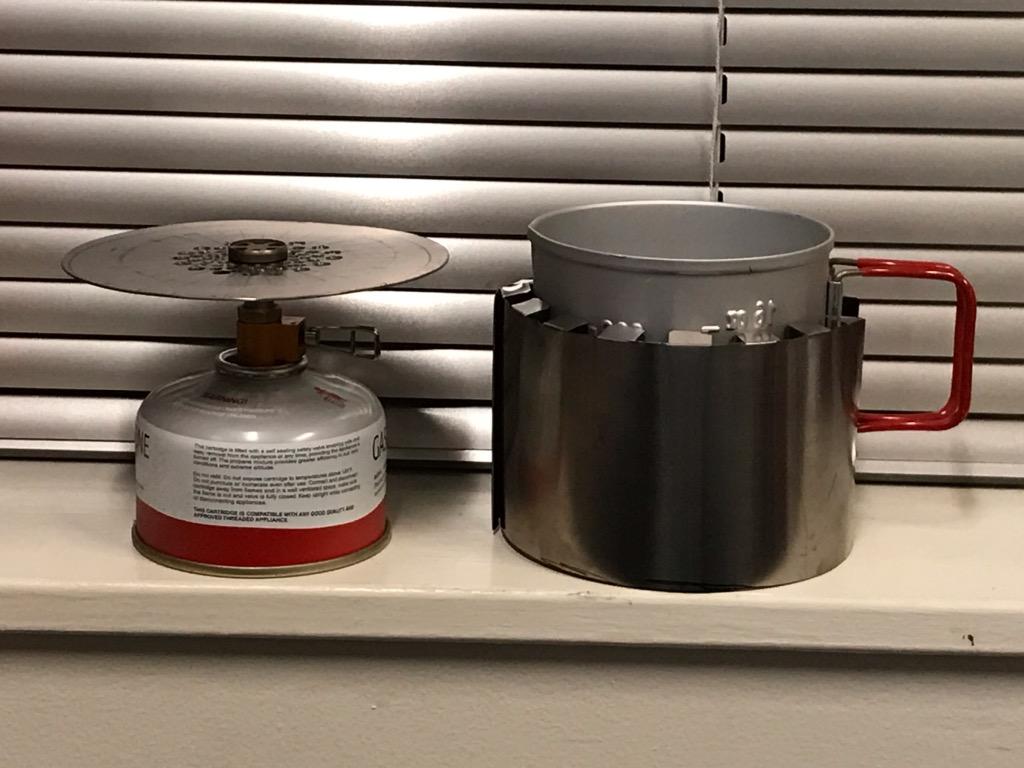Topic
A DIY version of the Jetboil Stash
Forum Posting
A Membership is required to post in the forums. Login or become a member to post in the member forums!
Home › Forums › Gear Forums › Make Your Own Gear › A DIY version of the Jetboil Stash
- This topic has 19 replies, 9 voices, and was last updated 3 years, 11 months ago by
 Jerry Adams.
Jerry Adams.
-
AuthorPosts
-
Feb 1, 2021 at 5:01 pm #3696799
I recently purchase the Sterno Inferno as I have been wanting to play around with a HX pot. At just over $20 I found it hard to resist. The FireMaple 300T is a very well-built stove and it turns out that it is easy to take apart. I prototyped a flat burner plate that let the HX pot sit directly on it.
My interest is in fuel efficiency and efficiency in the wind ( I don’t care about fast boils, just fuel efficiencies). The HX pot with a good mounting scheme might fit the bill.
I conducted 4 test burns, all using 2 cups of 70 F water. Since you cannot set the fuel flowrate; I tested a few levels. In all cases each test consumed 4 grams of fuel
Start 717 g / End 713 g – 10 minutes to boil
Start 713 g / End 709 g – 6:50 minutes to boil
Start 709 g / End 705 g – 8:00 minutes to boil
Start 705 g / End 701 g – 5:00 minutes to boil
Start to finish 16g were used in four 2 cups boils: 4 grams / 2 cups
Sterno Inferno – $22
FireMaple 300t – $25 on sale
Needs a lighter lid
Due to the configuration, I am pretty hopeful that the results in the wind will be pretty good. I’ll share more results when I dig out the wind tunnel


 Feb 1, 2021 at 5:09 pm #3696804
Feb 1, 2021 at 5:09 pm #3696804Weight?
Feb 1, 2021 at 5:15 pm #36968096 oz. without the lid.
Feb 1, 2021 at 6:44 pm #3696828Why the wild variation in boil times, even though same water volume and temp? There is no seeming correlation with fuel volume and burn time. Did you allow the system to return to ambient for each burn? Or did you test two back to back? It seems you tested the first two together, waited a bit and then the next two together, or maybe on different days?
Feb 1, 2021 at 7:31 pm #36968324.2 for the Inferno, no lid
1.9 for the modified FireMaple and SS plate (easy to reduce the weight of the plate)
pauses / cool down times between each test. There really isn’t repeatable way to set the fuel rate at low levels. You can kind of tell by the sound.
Feb 2, 2021 at 9:35 am #3696926Jon, thanks for posting the Inferno. I’d forgotten about that setup. Nice system you worked out. The pot alone is surprisingly light. But I wonder is it only made to cope with Sterno temps (incl. alcohol & Esbit), or can it handle the much higher temps of iso-butane?
Feb 2, 2021 at 1:25 pm #3696967Day 2 – The 4 grams per 2 cup boil looks great, however; the real test is performance in the wind. Since it will take some time to set up the experiment, I thought I would take a second shot at the prototype burner plate




The burner plate/stove assembly will fit inside the mug. The latest burner plate has tabs to center the mug and is 0.6 oz lighter than the original (1.3 oz for the assembly).
I am hesitant to run the stove at max output as I do not know if it was designed for that heat load and I do not want to destroy the mug yet. I am not sure how the fins are mounted to the stovebut there are small “spots” are on the flat, contact area. Almost like spot welds but there are no marks on the insides of the mug.

This is purely a DIY effort as most people wil not want to take the stove apart. After windtunnel testing, I will post all of the dimensions for those of you who want to make one yourself. Those of you who are interested in an adapter plate for the JetBoil or other HX pot, send to me the OD of the bottom of the base of the mug as well as the ID of the bottom openning. There may be a chance that I can design a “Universal” adapter plate.
Best regards
Feb 2, 2021 at 4:53 pm #3697013Very nice – Zelph put together a Sterno Inferno alcohol system that is my go-to when I’m going out solo. He included a lighter lid ;)
Feb 17, 2021 at 4:39 pm #3700116Update on the DIY Hyper Efficient Stove System for an HX Mug
Making a DIY kit for the Sterno Inferno mug makes sense. You can put a kit together that is lighter than the JetBoil Stash and wind protection at least as good as the JetBoil Zip. Fuel efficiency in calm conditions have been great: 4 grams to boil 2 cups of 70 F / 6 grams at 2.7 mph.
We felt that the original design was a little more complex than it needed to be, so we redesigned the plate. Additionally, we are recommending a 1/16” thick aluminum plate as aluminum is much easier for people to work with than Stainless Steel.

The Stove assembly will easily fit inside the Inferno and if you must minimize the volume, you can unscrew the stove and store a 4 oz gas canister inside as well

We bought a 4” diameter plate off of eBay for under $2 (not including shipping). For the most part, you will need to trim the OD down and drill a few holes. The pot can be located using pop rivets.

Best regards – Jon
Mar 12, 2021 at 5:37 pm #3703999Here is the latest update on the HX Stove kit. I did want to make this a DIY kit and released drawing for you to make your own burner plate. Since some people do not have the tool to make the part, I decided to manufacture some burner plates and offer them for sale.

I recently was able to test the system at sea level. I adjusted my test parameters to boiling 500 ml of 20 C water (instead of 2 cups at 70 F). This test uses a slightly high volume of colder water so it is a bit more demanding. Here are the results from 10 boils (average fuel consumption: 4.9 grams)

Calculating the efficiency, the system comes in at ~75% efficiency.

Here is a chart comparing the results to another test that I did using the PocketRocket2 Deluxe.

I repeated some wind tunnel testing and upgraded the windspeed to 4.7 mph (constant). I learned that at low burn rates, the efficiency drops off. By increasing the burn rate, the efficiency improves to the point a windscreen was not required. I believe that this has to do with the increase burn rate creating a larger internal pressure that tends to negate the affect of the ambient wind.

You can see more details in this video Mar 12, 2021 at 8:28 pm #3704021
Mar 12, 2021 at 8:28 pm #3704021Jon, It looks like you don’t use any kind of baffle/windscreen outside the pot, on top of the plate, correct? Have you considered something like this to make it even more impervious to wind? This is the same pot and stove as yours with a o.5 mm titanium base plate and .005″ titanium foil external baffle/windscreen:
 Mar 12, 2021 at 9:13 pm #3704022
Mar 12, 2021 at 9:13 pm #3704022David,
The next generation design has already been designed. I just have to build and test it.
Mar 12, 2021 at 11:09 pm #3704028I learned that at low burn rates, the efficiency drops off. By increasing the burn rate, the efficiency improves to the point a windscreen was not required. I believe that this has to do with the increase burn rate creating a larger internal pressure that tends to negate the affect of the ambient wind.
This is likely due to reduced convective losses as the pot heats up its surrounding environment. As you increase your fuel flow, you are imputing heat at a higher rate into the system, while the convective rate stays approximately the same (it actually increases as the water temp increases, but that would happen with any heat rate), thereby increasing your efficiency. I am unsure whether the increased pressure differential would have a huge effect, maybe the increased amount of heat going up the sides of pot as it exits the HX is helping to create of a buffer for the convection as well. I am guessing a cozy that could be kept in place during boiling would also be helpful.
Mar 13, 2021 at 9:32 am #3704358Roger has published graphs showing the convection heat loss and over a short period, it has minimal impact on boiling efficiency.
What I did not mention in the video is flame stability. At low burn rates, you can see the flames moving with the wind. At high burn rates, the flame is quite stable. My 2 cents.
Mar 13, 2021 at 11:25 am #3704383I’d love to see how close his test setup is to yours. Are you planning to put any test setup together to verify your hypothesis?
Apr 8, 2021 at 8:37 am #3708220Jon,
A decade ago I did boil tests with my Jetboil PCS and found that light breezes didn’t seem to hurt efficiency much. Even though breeze would push the flame to the side, the heat exchanger fins would still scavenge most of the heat on the lee side. Unfortunately in an actual wind, at cool temperatures (around freezing) the open bottom and low burner power really suffer and both boil time and fuel efficiency dropped off by 2-3x.
I tried using a piece of stainless steel hose clamp to partially block the air from blowing through the HX ports. It actually worked better on the lee side than windward. Unfortunately there was still too much air swirling up from the bottom.
Your system has a couple advantages: More restriction of airflow up through the baseplate and a much more powerful burner.
One suggestion to make tests more realistic- yet still easily repeatable- instead of 70 F / 20 C water and “room temperature” canisters, use 32 F /0 C water and hold the canister in an icewater bath of the same.
The lower water temperature lets the test cover 100 C of temperature rise allowing a bit more precise measurement of temperature rise per time or fuel consumption.
The lower canister temperature more realistically mimics real-world conditions. Jetboil’s original stove worked just fine on a warm day, but a half-empty canister (no propane left) at freezing temperatures and its output is anemic at best. I don’t need a 10,000 btu burner on a warm summer day but I’d like 4000 btu’s on a spring morning.
Apr 8, 2021 at 12:01 pm #3708240DIY HX Cooking System
The kit that I developed was just the initial Alpha Version. The key things that I discovered is that; 1) HX pots do increase fuel efficiency, 2) HX pots can act like a partial windscreen and 3) Efficiency in the wind is killed by the open bottom.
IMO, the value of the HX pot is under-rated in terms of efficiency, particularly in the wind. The JetBoil Stash performed poorly in the wind; above 4 mph, the efficiency dropped like a rock. I also made an Ocelot version for the Stash and it did not work well at all. I believe that the weakness of the Stash system is the stove coupled with the open bottom. I made a prototype DIY plate for the Stash and was able to get a sub 3-minute boil in 8 mph wind using 9 g of fuel (500 ml of 20C water). The next prototype used the PocketRocket Deluxe and I should have data in about a month or so.
With respect to temperature, I see things a different way. Once you determine the efficiency, you can scale it to different temperatures (or volumes of water). I’ve tested this multiple times with alcohol systems (temperature and volume), and it is predictable and repeatable: it comes down to physics. Colder canister temperatures are a different animal. I myself have found that micro-regulated stoves provide better controllability across the entire canister pressure range than unregulated stove. Roger may disagree with me, but that is my observation.
Apr 8, 2021 at 1:46 pm #3708278“I myself have found that micro-regulated stoves provide better controllability across the entire canister pressure range than unregulated stove.”
yeah
when I use an unregulated stove at cool temperatures, I’ll set the valve so it has a good flow of fuel initially, then after a minute it will slow way down
it’s just a bit annoying. I’ll just notice that it’s going very slowly and have to turn up the valve up to get it going at a more reasonable speed. Not a huge deal though
Apr 8, 2021 at 10:07 pm #3708324when I use an unregulated stove at cool temperatures, I’ll set the valve so it has a good flow of fuel initially, then after a minute it will slow way down
And it often gets frost on the surface. Whaddya know?Which is why I like remote inverted canister stoves in cold weather.
Cheers
Apr 9, 2021 at 7:48 am #3708337yeah, it also often gets frost on the outside of the canister. Because it gets cold
but just opening up the valve a bit isn’t a big deal. minor annoyance
-
AuthorPosts
- You must be logged in to reply to this topic.
Forum Posting
A Membership is required to post in the forums. Login or become a member to post in the member forums!
Trail Days Online! 2025 is this week:
Thursday, February 27 through Saturday, March 1 - Registration is Free.
Our Community Posts are Moderated
Backpacking Light community posts are moderated and here to foster helpful and positive discussions about lightweight backpacking. Please be mindful of our values and boundaries and review our Community Guidelines prior to posting.
Get the Newsletter
Gear Research & Discovery Tools
- Browse our curated Gear Shop
- See the latest Gear Deals and Sales
- Our Recommendations
- Search for Gear on Sale with the Gear Finder
- Used Gear Swap
- Member Gear Reviews and BPL Gear Review Articles
- Browse by Gear Type or Brand.

